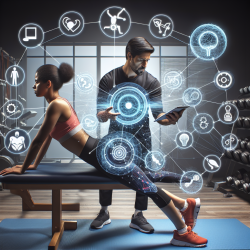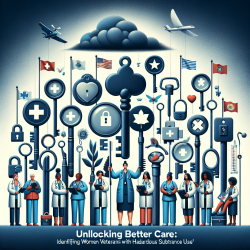Introduction
In the evolving landscape of healthcare, the integration of digital learning platforms is becoming increasingly essential for the continuous professional development of physiotherapists. A recent study titled "Development of a digital learning program for physiotherapists to enhance clinical implementation of aerobic exercise in stroke rehabilitation" sheds light on the potential of eLearning to bridge the gap between research and clinical practice. This blog explores how the eAEROBICS program, developed under the Demand Driven Learning Model (DDLM), can enhance the skills of physiotherapists and improve patient outcomes in stroke rehabilitation.
The Need for Digital Learning in Physiotherapy
Stroke rehabilitation presents unique challenges, particularly in the application of aerobic exercise (AE) to manage cardiovascular risk factors. Despite its benefits, AE remains underutilized due to physiotherapists' lack of confidence and access to evidence-based knowledge. The traditional modes of professional education, such as face-to-face workshops, are often impractical due to geographical and time constraints. This is where digital learning programs like eAEROBICS come into play, offering flexible, accessible, and cost-effective solutions.
eAEROBICS: A Novel Approach
The eAEROBICS program was designed to address the identified gaps in physiotherapists' knowledge and confidence in prescribing AE for stroke patients. The program comprises four modules:
- Self-Management and Behaviour Change
- Fundamentals of Exercise Physiology
- Screening for Safe Participation in AE after Stroke
- Prescription of AE for People Post Stroke
Each module is learner-centered, evidence-based, and clinically relevant, providing a comprehensive yet concise educational experience. The inclusion of interactive elements such as quizzes, case studies, and video content enhances engagement and facilitates knowledge retention.
Feedback and Improvements
Feedback from the pilot evaluation of eAEROBICS highlighted several strengths, including the relevance of content, ease of navigation, and the effectiveness of interactive elements. However, participants also suggested improvements, such as the addition of a navigation guide, progress indicators, and more technical support. These recommendations have been incorporated into the revised program, demonstrating the value of iterative development and user feedback in enhancing digital learning tools.
Implications for Practice
The development of eAEROBICS exemplifies the application of best practices in digital learning to facilitate evidence-based knowledge translation in physiotherapy. By enhancing physiotherapists' confidence and competence in prescribing AE, the program has the potential to improve patient outcomes and promote lifelong learning among healthcare professionals.
Conclusion
As the healthcare landscape continues to evolve, digital learning platforms like eAEROBICS offer a promising avenue for the ongoing professional development of physiotherapists. By embracing these tools, practitioners can enhance their skills, stay abreast of the latest research, and ultimately improve the quality of care provided to stroke patients.
To read the original research paper, please follow this link: Development of a digital learning program for physiotherapists to enhance clinical implementation of aerobic exercise in stroke rehabilitation.










